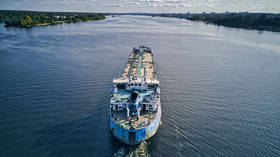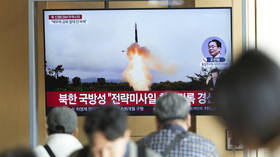Decision on Russian oil price cap revealed by media

The price cap on Russian crude oil will remain at its current level of $60 a barrel, Reuters reported on Monday, citing a Group of Seven (G7) official.
The decision reportedly comes amid increasing global prices for crude and calls by some nations to lower the price ceiling set by the group in response to Russia’s military operation in Ukraine.
The measure that came into effect in December bars Western businesses from providing transportation, insurance and financing to shipments of Russian crude, unless the cargo is bought at or below the set price.
The oil price cap has been supported by the US, Canada, the EU, Switzerland, Norway, Australia and Japan. However, Tokyo was later granted an exemption by Washington after Moscow threatened to cut off its supply to countries supporting the measure.
Similar price ceilings have been applied to Russian refined petroleum products since February 5. The allies agreed to set a price limit of $100 per barrel for diesel, jet fuel, and gasoline from Russia, and a $45-per-barrel cap for other oil products that trade below the crude price.
The official highlighted that the International Energy Administration (IEA) said in its latest report that the sanctions imposed by the G7 had been effective “in not restricting global crude and product supplies, while simultaneously curtailing Russia's ability to generate export revenue.”
Last week, the IEA reported that Russian oil revenue in March rose by $1 billion month-over-month to $12.7 billion, but was still 43% lower than a year earlier. The agency also noted that Russian oil exports soared to a three-year high of 8.1 million bpd last month.
According to the G7 official, exports of Russian crude have been consistent at more than three million barrels per day, while global markets have been steady.
For more stories on economy & finance visit RT's business section












